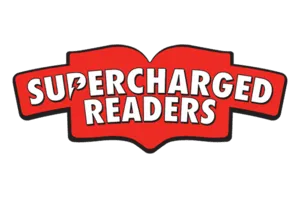Making Independent Reading Work in the Classroom
Independent reading is an empowering, personalized approach to student reading that allows students to select their own reading materials. In doing so, students can explore the vast world of literature at their own pace. This approach nurtures a genuine love for reading, promotes critical thinking, and enhances literacy skills in a relaxed environment.
Engaging in independent reading in the classroom not only supports the development of vocabulary and comprehension abilities but also cultivates a sense of responsibility and self-discipline in learners. Students are encouraged to immerse themselves and develop a deeper connection to literature and the world around them. Readers can reflect on their choices and develop their own interpretations, which fosters curiosity and nurtures a lifelong passion for reading that extends beyond the classroom.
Why Is Independent Reading Important?
Independent reading is a crucial component of literacy development and overall educational success, because it improves and promotes skills in comprehension, fluency, critical thinking, and analysis as readers evaluate and reflect on various themes and perspectives. When readers engage with the text, they are better equipped to monitor their comprehension, evaluate their reading strategies, and make necessary adjustments to improve their understanding of the material.
The Classroom’s Role in Independent Reading
Classroom settings play a crucial role in independent reading. A well-structured classroom encourages exploration and can enhance students' motivation to read independently. Factors such as the physical layout of the classroom, availability of resources, and the teacher’s approach to reading can either cultivate a love for reading or hinder students’ ability to develop independent reading habits.
Here’s how to thoughtfully design a classroom to promote a positive independent reading culture:
- Ensure the reading area is comfortable with good lighting and ample space
- Designate a quiet zone, free from noise and visual clutter
- Make books easily accessible, placing them in full view and within reach
- Offer different seating options (e.g., comfy chairs, beanbags, floor cushions)
- Provide a wide selection of books, magazines, and other reading materials that cater to various interests and reading levels
- Organize books by genre, author, or other categories
- Allow students to choose their own books based on interests and preferences
- Incorporate literacy into displays or showcase student work
- Create word walls to display frequently used vocabulary, sight words, and key terms
- Encourage students to keep reading logs to track their progress
- Facilitate book clubs or discussions to promote engagement and interaction
- Set up literacy workstations with different activities and materials to encourage reading and writing
- Utilize technology to provide interactive, personalized reading experiences
What Does Independent Reading Look Like?
Independent reading involves students choosing “just right” books, reading silently, with the teacher circulating to monitor and support their reading. Before independent reading can begin, students select books at their independent reading level, which fosters a sense of ownership and engagement.
To promote a smooth book selection process, the classroom library should be organized by categories to allow students to explore and discover books based on their interests. Once the books have been chosen, students read silently to themselves, focusing on comprehension and engagement. Throughout the process, the teacher circulates the room, observing and providing individualized support as needed.
Engaging Independent Reading Activities
Engaging independent reading activities are essential for fostering a love of literature and enhancing reading comprehension among learners of all levels and ages. By incorporating interactive elements, educators can motivate readers to reflect on their experiences, connect with the material on a deeper level, and cultivate a lifelong appreciation for reading and learning. To implement independent reading that keeps students engaged, focus on these main activities:
Reading and Reflection:
- Encourage students to jot down a few sentences about what they read
- Provide thought-provoking questions to explore deeper meaning and make connections
- Have students visualize by drawing, graphically organizing, or mind-mapping ideas
Character Profiles:
- Identify the character's name, appearance, and basic traits
- Older students can delve deeper, exploring character motivations, relationships, and how they change throughout
- Encourage students to take on the role of a character and respond to questions
Book Clubs & Reading Groups:
- Facilitate student discussions to share thoughts and interpretations
- Encourage participation and assign roles
- Have students create a book review, a skit, or a piece of art inspired by the book
Visual Reading Logs:
- Students record the title, author, and a brief summary in a chart
- Incorporate space for drawings or personal reflections
- Utilize online tools or apps for easy organization and sharing
Overcoming Challenges in Implementing Independent Reading
Implementing independent reading in the classroom can present several challenges, including students’ difficulties in selecting appropriate books, a lack of motivation, and managing a diverse group of readers at varying skill levels. Tackle such issues with these strategies:
- Provide structured book selection sessions to help students identify genres and topics of interest
- Facilitate book discussions and promote collaboration for sharing thoughts, ideas, and recommendations
- Implement tiered reading groups for students who share similar abilities
- Track progress with reading logs or interest surveys
- Integrate independent reading with other activities like writing, art, or other subjects
- Connect independent reading to real-world applications and interests
- Provide targeted instruction and support for students struggling with reading skills
The Teacher’s Role in Independent Reading
Educators serve as facilitators, encouraging students to explore literature on their own terms. They provide invaluable guidance and wisdom, helping students navigate challenges both in and out of the classroom. They can model independent reading behaviors, and provide guidance in selecting appropriate texts that match students’ interests and reading levels. Teachers provide instruction and scaffolding while also offering strategies to enhance comprehension and critical thinking.
When teachers facilitate a supportive learning environment, students are encouraged to set goals, develop their skills, and take ownership of their educational journey. Teachers who participate in discussions about books and provide constructive feedback significantly enhance students’ motivation, confidence, curiosity, and critical thinking. Ultimately, this leads students to improved reading skills and a lifelong passion for literature and reading in their academic and personal lives.

The Impact of a Successful Independent Reading Program
A successful independent reading program significantly boosts student literacy, comprehension, vocabulary, and overall reading fluency, fostering a lifelong love for reading. Voyager Sopris Learning offers Power Readers and Supercharged Readers, decodable books for grades K–4, and LANGUAGE! Live for grades 5–12.
Power Readers is a series of 28 decodable stories for grades K-4 with pre- and post-reading skill-building activities. Supercharged Readers is a series of 37 decodable and controlled text chapter books designed for grades 1-4.
LANGUAGE! Live® is an intense, comprehensive literacy intervention for students in grades 5–12 grounded in the science of reading. With a blended approach, LANGUAGE! Live's instruction is designed specifically for adolescents reinforcing the literacy foundations students need while strategically using high-interest, authentic text to engage and accelerate them to grade-level proficiency.
Exposure to a wide range of texts enriches students’ vocabulary and improves spelling and grammar. They expand their knowledge and understanding of the world, develop critical thinking skills, and improve their focus and concentration skills, which are critical for overall academic success. Contact Voyager Sopris Learning® today to inquire about Power Readers, Supercharged Readers and LANGUAGE! Live and start improving students’ overall academic achievement.


